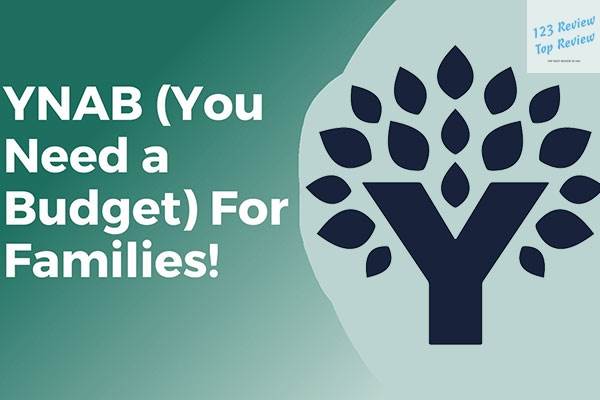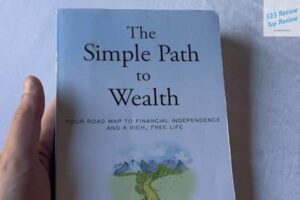In this article, 123 Review explores the core principles of YNAB, including its four rules for effective money management, and delves into how these concepts change traditional budgeting perspectives. Readers will gain insights into key budgeting concepts, practical applications of the YNAB software, and personal finance management tips.

The review also features success stories and comparisons with other budgeting methods, providing a comprehensive evaluation for anyone seeking to take control of their finances.
Overview of You Need a Budget Philosophy
“You Need a Budget” (YNAB) is more than just a budgeting method; it’s a comprehensive financial philosophy designed to transform the way you manage money. Created by Jesse Mecham, YNAB focuses on proactive financial management and long-term stability. At the heart of YNAB are four simple yet transformative rules that guide users towards better financial health and security.
The Four Rules of YNAB
- Give Every Dollar a Job: This rule is about intentionality with your money. Instead of leaving dollars unallocated, YNAB encourages users to assign each dollar a specific purpose. This ensures that every bit of income is directed towards expenses, savings, or financial goals, fostering a sense of control over your finances.
- Embrace Your True Expenses: YNAB emphasizes planning for larger, less frequent expenses, such as annual insurance premiums, holiday gifts, or car repairs. By setting aside money each month for these true expenses, users can avoid the financial stress that comes with unexpected costs and ensure they are always prepared.
- Roll with the Punches: Life is unpredictable, and so are expenses. This rule teaches flexibility in budgeting, allowing users to adjust their budget categories as needed without guilt or frustration. If you overspend in one category, simply move money from another category to cover it. This adaptability helps maintain financial stability even when things don’t go as planned.
- Age Your Money: The goal of this rule is to increase the time between earning and spending money. Ideally, users will reach a point where they are spending money that is at least 30 days old. This creates a buffer that reduces financial stress and provides a cushion for unexpected expenses.
How YNAB Changes Budgeting Perspectives
YNAB shifts the traditional view of budgeting from restrictive and limiting to empowering and liberating. Instead of seeing a budget as a tool for cutting back and deprivation, YNAB users view it as a proactive plan for achieving financial goals. This perspective change fosters a sense of control and confidence, helping users break the paycheck-to-paycheck cycle and build a more secure financial future.
Testimonials from YNAB Users
Countless users have shared their positive experiences with YNAB, highlighting its effectiveness in transforming their financial habits. Testimonials often mention increased savings, reduced debt, and a greater sense of financial peace. Users praise YNAB for its user-friendly software, supportive community, and the empowering feeling of finally taking control of their finances.
Key Concepts and Principles
Understanding the Paycheck-to-Paycheck Cycle
Living paycheck to paycheck is a common issue for many individuals and families. YNAB addresses this by promoting strategies that create financial buffers. By implementing the four rules, users can gradually break free from this cycle and achieve greater financial stability. The key is to build up savings that allow you to spend money that is at least 30 days old, reducing reliance on the next paycheck.
The Importance of Realistic Budgeting
Realistic budgeting is a cornerstone of YNAB’s philosophy. This involves accurately accounting for all expenses, both regular and irregular. By embracing your true expenses and planning for them in advance, you can avoid financial surprises and maintain a balanced budget. This realistic approach ensures that users are prepared for all financial obligations and can manage their money effectively.
Setting Financial Goals with YNAB
YNAB encourages users to set clear, achievable financial goals. Whether it’s building an emergency fund, paying off debt, or saving for a big purchase, YNAB provides the tools and framework to reach these goals systematically. By giving every dollar a job and rolling with the punches, users can make steady progress towards their financial aspirations.
Application and Practical Use
Features of the YNAB Software
YNAB offers robust software that simplifies budgeting and financial management. Key features include:
- Real-Time Expense Tracking: YNAB allows users to track their spending in real-time, ensuring that they always know where their money is going.
- Goal Setting: Users can set and track financial goals within the software, making it easy to stay focused and motivated.
- Detailed Financial Reporting: YNAB provides comprehensive reports that help users analyze their spending patterns, identify areas for improvement, and celebrate their successes.
- Accessibility: The software is available on multiple platforms, including desktop and mobile, ensuring that users can manage their budget anytime, anywhere.
Strategies for Implementing YNAB in Daily Life
Implementing YNAB involves regular budget reviews, categorizing transactions, and adjusting budget categories as needed. Users are encouraged to engage with their budget frequently, making necessary adjustments to stay on track with their financial goals. Here are some practical strategies for using YNAB effectively:
- Weekly Budget Check-Ins: Set aside time each week to review your budget, categorize new transactions, and make adjustments as needed.
- Be Honest About Expenses: Accurately track all expenses, including small or irregular ones, to ensure that your budget reflects your true financial situation.
- Use YNAB’s Resources: Take advantage of YNAB’s tutorials, workshops, and community forums to gain a deeper understanding of the system and get support from other users.
Tips for Maintaining a Budget with YNAB
Maintaining a budget with YNAB requires consistency and commitment. Here are some tips to help you stay on track:
- Stay Engaged: Regularly interact with your budget to keep it up-to-date and accurate.
- Embrace Flexibility: Don’t be afraid to adjust your budget categories as needed. Life is unpredictable, and your budget should reflect that.
- Celebrate Small Wins: Recognize and celebrate your progress, no matter how small. This can help you stay motivated and committed to your financial goals.
Personal Finance Management
Overcoming Budgeting Challenges
YNAB provides strategies to overcome common budgeting challenges, such as irregular income, unexpected expenses, and lifestyle inflation. The program’s flexibility allows users to adapt their budget to changing circumstances effectively. Here are some tips for addressing these challenges:
- Irregular Income: Create a buffer by saving a portion of your income during high-earning months to cover expenses during low-earning months.
- Unexpected Expenses: Plan for true expenses by setting aside money each month for irregular costs, such as car repairs or medical bills.
- Lifestyle Inflation: Be mindful of lifestyle inflation and prioritize saving and investing over increasing your spending.
YNAB for Families and Couples
YNAB is designed to work for families and couples, promoting financial transparency and collaboration. By sharing a budget, families can ensure that everyone is on the same page regarding financial goals and spending. Here are some tips for using YNAB as a family or couple:
- Hold Regular Budget Meetings: Schedule regular meetings to review your budget, discuss financial goals, and make decisions together.
- Set Joint Goals: Establish shared financial goals, such as saving for a vacation or paying off debt, to stay motivated and focused.
- Communicate Openly: Maintain open and honest communication about money to avoid misunderstandings and build trust.
Building an Emergency Fund with YNAB
One of the key goals YNAB promotes is building an emergency fund. By prioritizing savings and planning for unexpected expenses, users can create a financial cushion that provides security and peace of mind. Here are some steps to build an emergency fund with YNAB:
- Set a Savings Goal: Determine how much you want to save for your emergency fund, typically three to six months of living expenses.
- Allocate Funds Regularly: Set aside a portion of your income each month towards your emergency fund until you reach your goal.
- Keep it Accessible: Ensure that your emergency fund is easily accessible in case you need to use it for unexpected expenses.
Success Stories and Case Studies
Transformations Through YNAB
Many users have experienced significant financial transformations through YNAB. These stories often include paying off substantial debt, achieving savings milestones, and gaining financial freedom. Users attribute their success to the discipline and structure that YNAB provides, as well as the support of the YNAB community.
Interviews with Users Who Achieved Financial Goals
Interviews with successful YNAB users reveal the practical applications of the program’s principles. These individuals share insights and strategies that helped them reach their financial goals, offering inspiration and practical advice to others. Common themes include the importance of consistent budgeting, realistic goal-setting, and the power of community support.
Lessons Learned from YNAB Experiences
Users often reflect on the lessons they’ve learned through YNAB, such as the importance of consistent budgeting, the benefits of planning for true expenses, and the empowerment that comes from taking control of their finances. These lessons highlight the transformative impact of YNAB and provide valuable insights for new users.
Comparisons with Other Budgeting Methods
YNAB vs. Traditional Budgeting Techniques
Compared to traditional budgeting methods, YNAB offers a more dynamic and proactive approach. Traditional budgets often focus on limiting spending, whereas YNAB emphasizes purposeful spending and financial flexibility. Here are some key differences:
- Proactivity vs. Reactivity: YNAB encourages users to plan for expenses in advance, while traditional budgets often react to expenses as they occur.
- Flexibility vs. Rigidity: YNAB allows users to adjust their budget categories as needed, while traditional budgets can be more rigid and less adaptable.
- Focus on Goals: YNAB emphasizes setting and achieving financial goals, whereas traditional budgets may not prioritize goal-setting as strongly.
Incorporating YNAB with Other Financial Tools
YNAB can be effectively integrated with other financial tools and strategies. Users often combine YNAB with savings accounts, investment platforms, and other budgeting apps to create a comprehensive financial management system. Here are some ways to incorporate YNAB with other tools:
- Savings Accounts: Use YNAB to track your savings goals and allocate funds towards your savings accounts.
- Investment Platforms: Integrate YNAB with your investment accounts to monitor your progress towards long-term financial goals.
- Other Budgeting Apps: Combine YNAB with other budgeting apps to get a holistic view of your finances and make informed decisions.
Advantages of YNAB Over Competitors
YNAB stands out from competitors due to its unique philosophy, user-friendly software, and supportive community. Its focus on proactive financial management and long-term stability sets it apart from other budgeting tools. Here are some advantages of YNAB over competitors:
- Unique Philosophy: YNAB’s four rules provide a structured yet flexible approach to budgeting that promotes financial stability and empowerment.
- User-Friendly Software: YNAB’s intuitive software makes it easy to track expenses, set goals, and analyze financial data.
- Supportive Community: YNAB’s active user community offers support, advice, and motivation to help users stay on track with their financial goals.
Conclusion and Recommendations
Final Thoughts on You Need a Budget
“You Need a Budget” is more than just a budgeting tool; it’s a comprehensive financial management system that empowers users to take control of their finances. Its principles and strategies are designed to create lasting financial stability and peace of mind. Whether you’re struggling with debt, living paycheck to paycheck, or simply wanting to be more intentional with your money, YNAB provides the framework and tools to achieve your financial goals.
Who Should Read This Book
This book is ideal for anyone looking to improve their financial situation. Whether you’re a beginner just starting your financial journey or an experienced budgeter seeking new strategies, “You Need a Budget” offers valuable insights and practical advice. It’s especially useful for those who appreciate a structured, yet flexible approach to budgeting.
Where to Buy YNAB and Additional Resources
“You Need a Budget” can be purchased from major retailers, including Amazon and Barnes & Noble. Additionally, YNAB offers a wealth of resources on their website, including tutorials, workshops, and community forums, to support users in their budgeting journey. These resources provide valuable guidance and support, helping users make the most of the YNAB system and achieve their financial goals.





